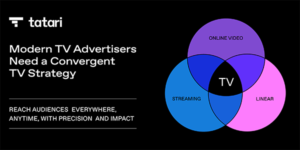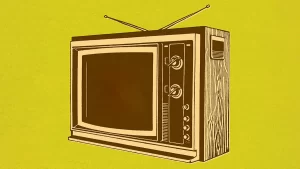DRTV Derailers is a monthly series on Internet-age issues that can turn a promising DRTV campaign into a train wreck.
Back in the day pre-Internet, producing a winning DRTV campaign was so much easier than it is today. Orders came in by unique 800 numbers and in envelopes with checks. Media was cheap, and consumers had plenty of money to spend.
But then the Internet came along. Web sites. Shopping carts. Search engine marketing. Banner ads. Social networks. And suddenly, making DRTV work became more complex, more difficult and more costly.
With media costs steadily increasing and a consumer-centric environment developing, DRTV marketers now face the need for online ordering and tracking, building web sites and landing pages and learning how to use paid search to their advantage.
Website and Landing Pages
50 percent, 75 percent or even 100 percent of your orders can take place online. You can’t afford to lose orders to competitors who are more nimble than you are.
After reviewing hundreds of landing pages, websites and microsites for DRTV products over the years, I’ve concluded that there’s nothing as important as having a well-designed site that converts. I’ve seen too many sites that:
- Look nothing like the short-form or infomercial
- Have poor navigation
- Have a lot of useless information
- Present the consumer with numerous links that are not necessary
- Don’t have the ability to play the original short-form or show
- Testimonials are missing or not prominently displayed
- Bury the offer instead of making it prominent
- Don’t have a graphic call-to-action
- Use the word “submit” in a button instead of a more descriptive call to action
- Have inconsistent information, such as a different price or offer than is featured in the commercial
- Have a poorly designed shopping cart
These basic errors lead me to conclude that site design is often treated as an afterthought instead of a component deserving the same kind of attention that goes into the production of the commercial.
To see why this is so important, do the math. Shopping cart abandonment — when online customers get into the cart and then leave — accounts for 70 percent or more of lost customers. Add in bad site design and other common errors, and you could be losing 90 percent of consumers who you’ve spent cold cash on to get to your site in the first place.
You should be able to get stats from your webmaster or IT people and determine how many consumers arrive at your site on a monthly basis. Imagine that 90 percent of them leave without purchasing. Imagine if you could prevent just 10 percent of them from leaving — wouldn’t that add significant dollars to your bottom line?
Bridge Over Disaster
Put as much effort into the site as you do for production and media planning.
In the same way you create a marketing blueprint and/or a creative brief to design your infomercial, follow a similar best practices process for creating your website or landing page. Spend time reviewing dozens of landing pages for successful DRTV products, just as I have. You’ll see some well-designed sites that you can emulate. Benchmark traffic and conversion rates for your current site so you can see how a revised site will enhance conversion.
Specifically, here are some suggestions based on the list of common errors presented on the previous page:
- Your site should have the same look and feel as your commercial (with similar graphics) so that consumers will know they are on the right site.
- You don’t need much navigation. We pioneered microsites in 1996 and found that having the entire site on one to five pages is all you need. I’ve seen numerous sites where the complete site is just one page, including all the order information and form. In this case, less is more.
- Look at every piece of text and graphic on your site, and ask yourself, “Is this really necessary? Is it converting window shoppers?” You only need to present information that aids in the conversion process.
- Remove all links that don’t contribute to the conversion process. You don’t need to provide “resources” that will distract the consumer from doing the one thing that you want them to do: buy.
- You MUST have the ability to play the original spot or long-form — either automatically when the page loads or clickable by the consumer. There are numerous reasons for doing this: the consumer only saw a small percentage of the show, he/she wants to show it to a family member, they want to see a specific part again and so forth.
- In the same way that authentic testimonials are the backbone of your short- or long-form, they need to be present on your site. You can put three to five of the best ones on the initial landing page, and then give visitors the ability to see more on a secondary page. Same with positive press you’ve received — awards, endorsements and other “warm and fuzzy” third-party comments.
- You’ve taken the time and effort to create a compelling offer, so make sure it’s prominent on your site. Don’t bury it. We all know how important the offer is from decades in the DRTV business, so don’t relegate it to an unimportant position on your site.
- Your call-to-action should be a bold and prominent button. It should be repeated at least two times; place one of them above the fold.
- Don’t use the word “submit” as your CTA graphic. It’s a techie term that means nothing to most people. It’s easy to come up with something much better, such as “Send it to me today!” or “Buy Now” or “Click for Free Shipping.” You get the point.
- Make sure you have several people proof your website, comparing it against information in the commercial. You can’t afford to lose customers because of a different price, different offer or missing/incomplete information.
- Make sure your shopping cart is simple — having as few steps as possible — and addresses the common reasons for abandonment.



